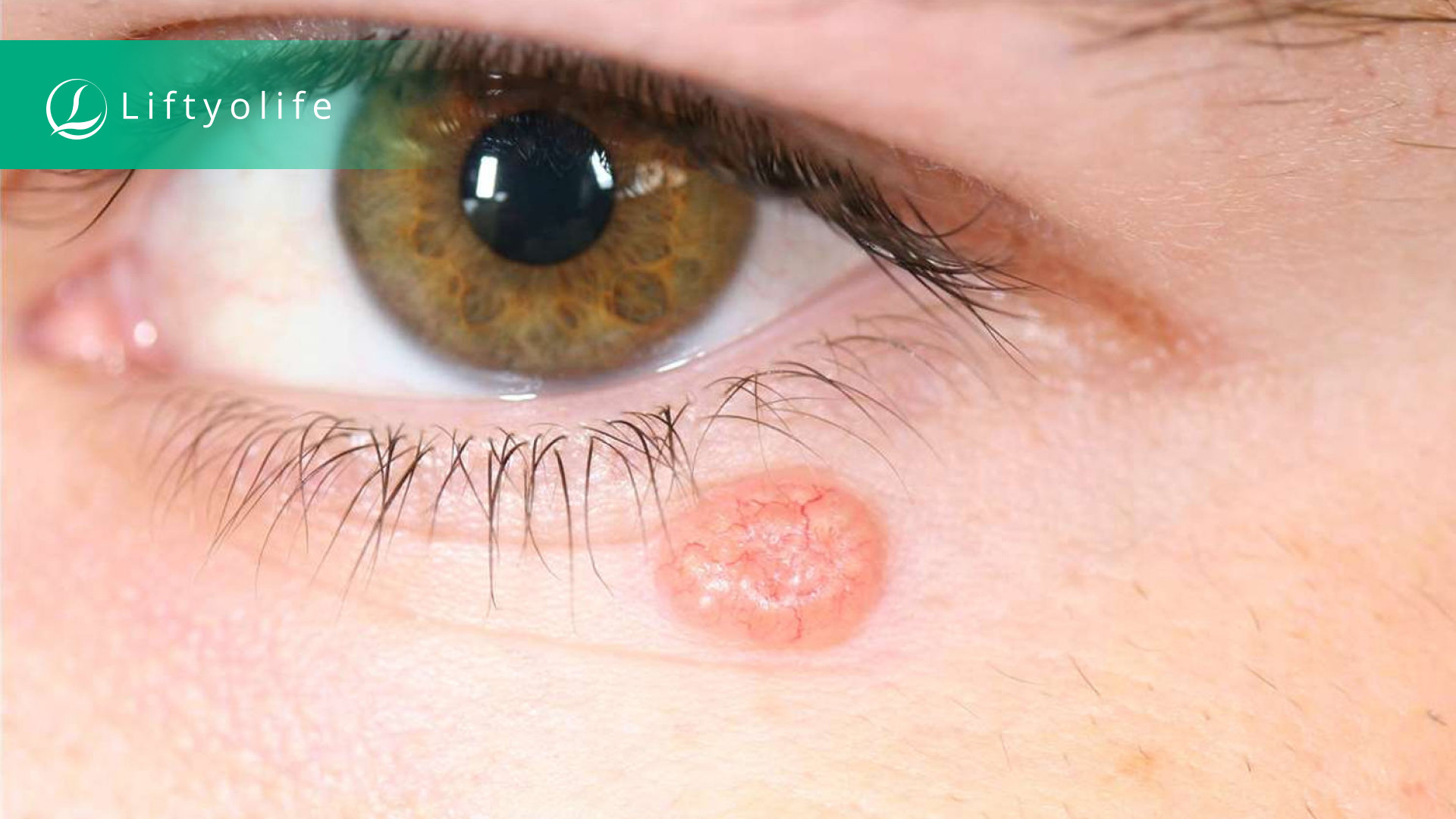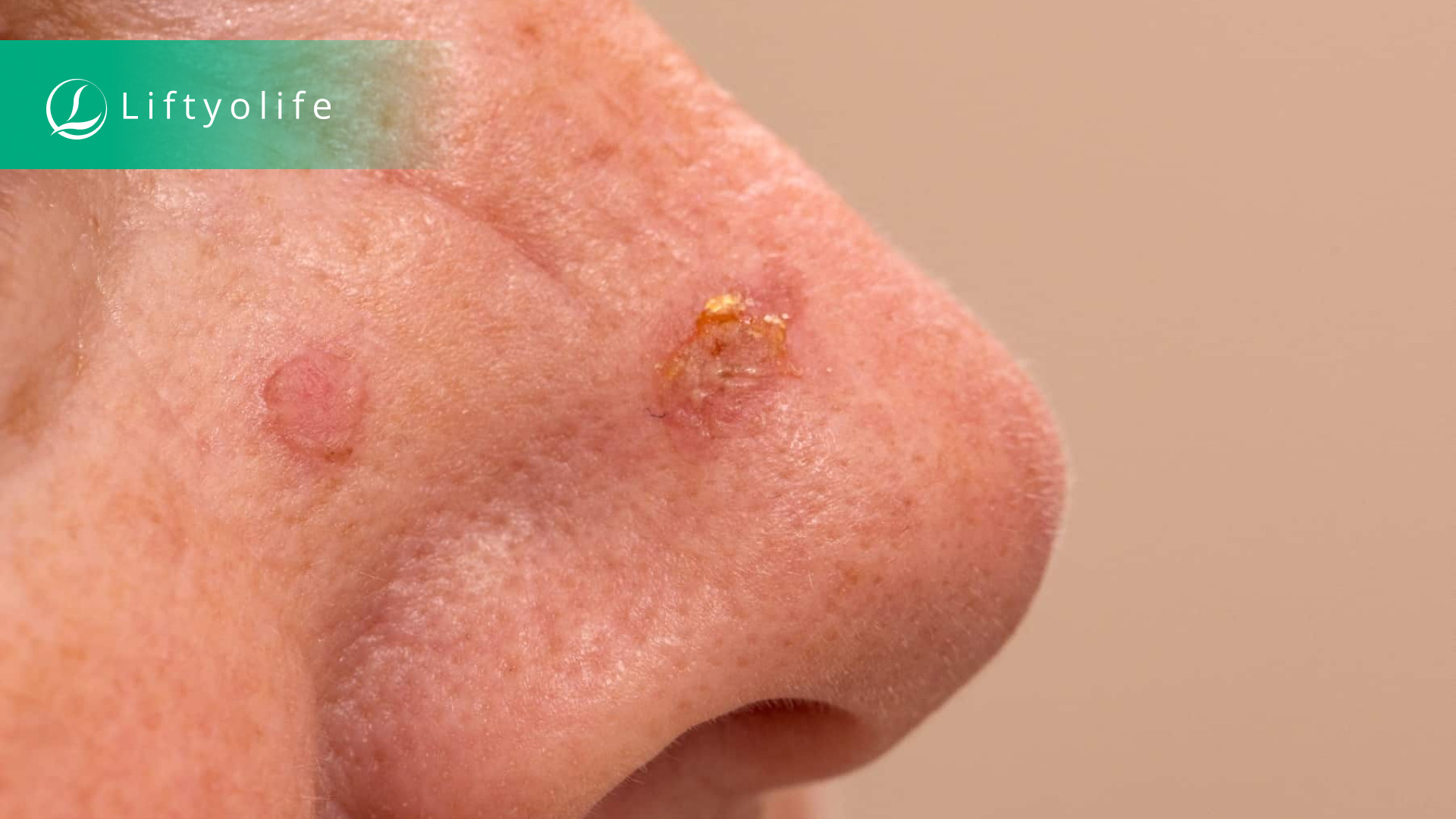Types Of Skin Cancer

How many types of skin cancer? If you suffer from this disease, identifying it will give you a better understanding of each type’s causes, symptoms, treatment, and prevention. In the U.S., skin cancer is the most common type. According to current estimates, one in every five Americans will develop skin cancer during their lifetime. In other words, approximately 9,500 people in the United States are diagnosed with skin cancer every day (Siegel RL, 2021). Skin cancer is classified into many different types. Liftyolife (liftyolife.com) will draw a picture of these types for you today. Don’t take your gaze away from this article.
1. Squamous cell carcinoma (SCC) of the skin
Squamous cells are closest to the surface of your skin, and their function is to line it. Squamous cell carcinoma (SCC) is the second most common form of skin cancer. It is most commonly found in areas of the body that have been damaged by UV rays from the sun or tanning beds. The skin on the head, chest, neck, upper back, lips, ears, arms, legs, and hands is sun-exposed.
SCC grows slowly, so it’s simple to treat if caught early. Unlike other kinds of skin cancer, it can spread to the tissues, bones, and nearby lymph nodes, making treatment challenging.

Squamous cell carcinoma (SCC) of the skin
Exposure to ultraviolet (UV) rays, such as those emitted by the sun or a tanning bed, affects the middle cells and outer layers of your skin, causing them to produce an excess of cells and fail to die off as they should. This can result in out-of-control cell growth, leading to squamous cell carcinoma.
Other factors, such as immune system disorders, can contribute to this overgrowth.
SCC can manifest as:
- A dome-shaped bump that resembles a wart,
- An open wound that does not entirely heal,
- A rough, red, crusty, scaly patch of skin that bleeds easily,
- A lower area in the center and raised edges can bleed or itch.
2. Basal cell carcinoma (BCC)
Basal cell carcinoma (BCC) is the most common skin cancer and the most common type of cancer overall. BCCs form as a result of abnormal, uncontrolled basal cell growth. In the United States alone, an estimated 3.6 million cases are diagnosed each year.
Because BCCs grow slowly, most of them are curable and cause minimal damage if detected and treated early. BCC is originally from the basal cells, which are skin cells that produce new skin cells as old ones die.

Basal cell carcinoma (BCC)
Furthermore, BCC is commonly seen as a slightly transparent bump on the skin, though it can take other forms. BCCs, in other words, frequently appear as flesh-colored round growth, pearl-like bubbles, or pinkish patches of skin. This disease usually develops due to excessive sun exposure or indoor tanning years.
BCC can spread far and wide. If allowed to grow, it can cause damage and disfigurement by penetrating the nerves and bones. Early detection and treatment of BCC play an essential role.
3. SCC can develop from a precancerous skin growth
Actinic keratoses (AKs) are dry, scaly patches or spots that appear on some people’s skin. An AK, which is caused by excessive sun exposure, is not skin cancer.
It is the most common type of pre-cancer that develops on skin that has been damaged by long-term exposure to ultraviolet (UV) rays from the sun or indoor tanning. The condition is also known as solar keratosis.

SCC can develop from a precancerous skin growth
Long-term exposure to ultraviolet (UV) radiation causes AKs. This means that if you had an AK, you are more likely to develop additional actinic keratoses (plural). Because AKs can develop into squamous cell carcinoma (SCC), a common and sometimes invasive form of the disease, you are at a higher risk of developing skin cancer.
People with AKs typically have fair skin. And they usually develop on sun-exposed skin, such as the head, neck, hands, and forearms. Treatment is critical because an AK can develop into skin cancer.
4. Melanoma
Melanoma, the most severe kind of skin cancer, grows in the cells (melanocytes) that produce melanin, the pigment that gives your skin its color. Melanoma can also develop in the eyes and, in rare cases, inside the body, such as the nose or throat.
Although the exact cause of all melanomas is unknown, exposure to ultraviolet (UV) radiation from sunlight or tanning lamps and beds raises your risk of developing melanoma. Limiting your exposure to UV radiation may help lower your risk of developing melanoma.

Melanoma
Melanoma can form within an existing mole on your skin or appear suddenly as a dark spot on the skin different from the rest.
Melanoma risk appears to be rising in people under the age of 40, particularly among women. Knowing the symptoms of skin cancer can help ensure that cancerous changes are detected and treated before cancer spreads. Melanoma can be successfully treated if detected early.
5. Rarer types of non melanoma skin cancer
- Sebaceous gland cancer: An uncommon form of skin cancer that affects the glands that produce the skin’s natural oils is sebaceous gland cancer. Surgery is usually used to treat this type of cancer.
- Merkel cell carcinoma: Merkel cell carcinoma is exceptionally uncommon. Surgery, radiotherapy, or both are used to treat the condition. This usually works well, but cancer can reoccur in the exact location. It can also expand to nearby lymph nodes or other body parts.
- Kaposi’s sarcoma: Kaposi’s sarcoma is a rare disease. This cancer starts in the cells that line the lymph nodes and the blood vessels in the skin. It is frequently associated with HIV, but it can also occur in people who do not have HIV. Surgery, radiotherapy, and, in some cases, chemotherapy are used to treat the condition.
- T cell lymphoma of the skin: Primary cutaneous lymphoma is another name for T cell lymphoma of the skin. It is non-Hodgkin lymphoma. This type of cancer can be treated using a variety of methods.
Check every part of your body by using mirrors, from your face, neck, ears, and scalp to your genital area and between your buttocks, to identify any abnormalities on your skin. This can assist you in determining the types of skin cancer you have at the outset. To detect cancer as soon as possible, have a screen test at least every 6 months. Liftyolife (liftyolife.com) will be your companion and provide you with the best health advice.
==> Read More:







